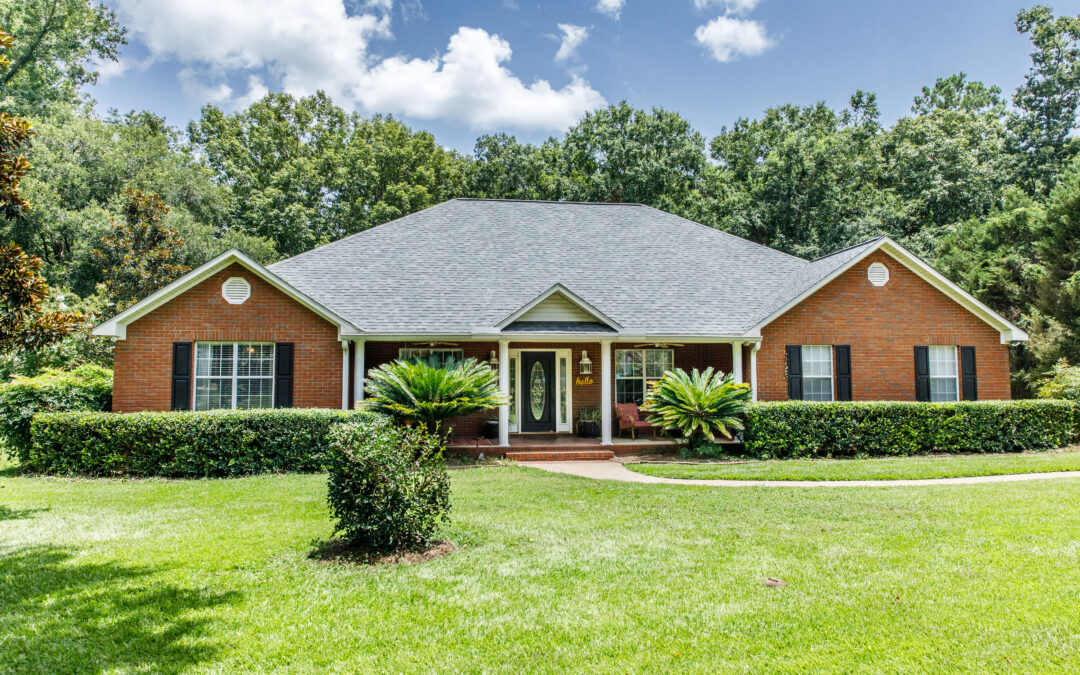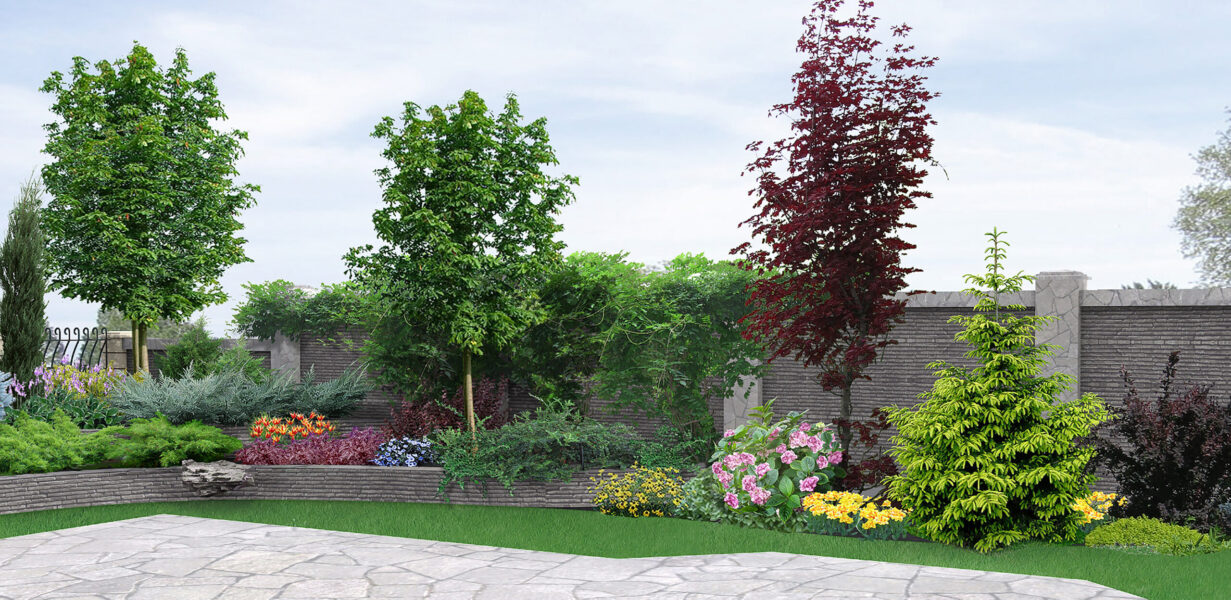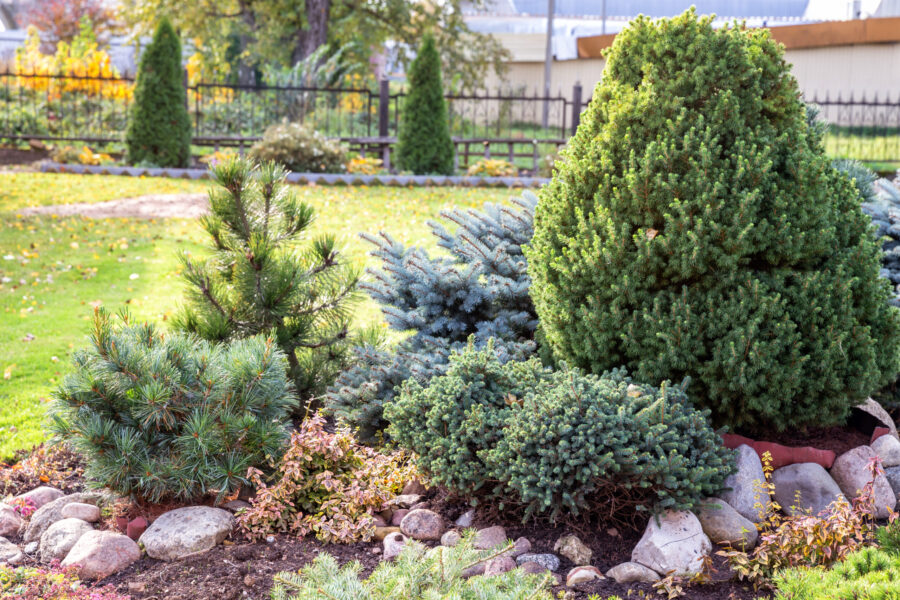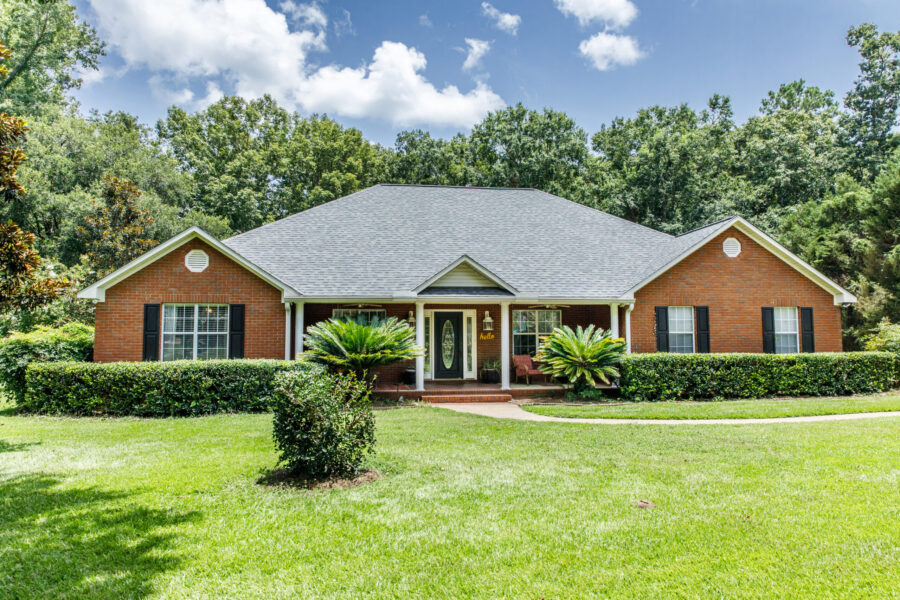The possibilities for the landscape in front of your home or business are endless and diverse. Each landscape is as unique as each property owner. Each property has something an owner wants to express. If we’re honest there is also a desire to get some attention and admiration from the neighbors or customers. Curb appeal is the first landscape that should take priority.
Elements of Curb Appeal
Attractive landscaping requires more than just a beautiful lawn. A well-landscaped front yard should consider the style and size of your house and how it’s situated on the property. Consider the amount of sunlight the yard receives and the amount of access to water. Determine how to best use plantings, bushes, shrubs, and trees to enhance the property. Your front yard should also include hardscaping features, from walkways and driveways to raised beds, planters, and decorative containers. It’s called developing curb appeal.
Newly Built Properties
Even a newly built property that has basic curb appeal will lack the impression that can be made by a professional. The basic “placeholder” landscape is in place just to offer basic curb appeal for the new property. Often it is a basic, space filling, cookie cutter design that is extremely limited. After all, the home builders are not landscapers. The builders focus on what is on the inside, but a professional landscaper focuses on what is on the outside.
Foundation
To create a stunning landscape, you must have a strong foundation. Professionals till the soil and add needed nutrients and compost. A designer will crown beds with height in the center and low on the perimeter to ensure proper drainage. A designer also looks at the grade of the property. If there is significant sloping on the property, a landscaper may create level steps and retaining walls to create an appealing space. Consider connecting the stepped areas with actual steps leading to a front door.
Plants
A quality landscaping designer provides landscape that is well suited to the conditions and environment, choosing plants that will thrive in the climate. The design must also consider the amounts of sunlight and water the area receives. It includes plants with varied heights, textures, colors, and shapes. A landscaper provides proper spacing between plants. A good landscaper creates layers to offer depth. In addition, they consider the design over all 4 seasons with a tiered design of plants for each season. Including groundcover is a low-maintenance option that will provide filler around your plants. Finally, don’t forget to go up! Hanging plants on porches or even from trees provide emphasis to pull the eye upward.
Trees
Plant trees strategically. A landscape professional plans for the tree’s appearance and needs for today as well as for the future. Plan for the design 12-15 years out, when the trees are mature. Builders often plant trees to suit the HOA, but they also grow to be too large. Overgrown trees block the view of the property. The roots of large trees impact the lawn, other plants, and even create foundation problems for the property. Plant large trees, such as Oak, Sycamore, and Maples, in places with plenty of room to grow without interference. They often become the focal point of landscape designs. Don’t forget flowering trees that add the colors of spring. Also, consider evergreens to provide color year-round. Finally, consider planting under the tree with a bed of flowers or plants that will thrive in the shade of the tree.
Shrubs
Shrubs and bushes are a classic touch to line your property, driveway, or walkways. The tight leaves and branches of shrubs such as boxwood easily transform shapes into a number of designs – rounded, square, or even a hedge wall. Shrubs offer something to draw the eye midway up above the ground.
Hardscapes
In planning a beautiful landscape, we cannot forget hardscapes. Drab walkways and driveways can detract from an otherwise beautiful landscape design. A good designer uses hardscapes to add to and support the total aesthetic affect you desire for the front of your property. A designer might change out walkways with pavers or flagstone. Another strategy is to replace cement or asphalt with pavers. If cost is an issue, a cobblestone border to walkways and driveways can make a big impact. Often the best place to start a redesign of your front landscape is with the front walkway. You want it to be functionally integrated into your planting plan as well as the overall landscape design.
Consider the path from the driveway to the front door. The instinct is to take the most direct path. A curved path provides a more aesthetic look, however, a long, meandering path may be more of a bother. It could encourage guests to cut through the landscape to get directly to the door.
Lighting
Lighting is also an important consideration. Lighting provides the finishing touch on a landscape design. It not only provides nighttime curb appeal but is also a safety issue. Lights should be a balance of downward facing lights to illuminate walkways, undermounted lights to highlight steps, and upward lights to illuminate the yard. On the other hand, don’t over-saturate the yard with light. A front door sconce or pendant light should be somewhat brighter than walkway lights to draw your guests in towards the door.
Other Features for Great Curb Appeal
In addition to these basics, a landscape design, especially one designed for curb appeal, creatively adds in other features. Frame the front of the home with color in window boxes. A water feature provides a relaxing atmosphere. Potted plants or raised box planters are an option to have easy access to change out the plants throughout the year. Bring potted plants inside over the winter to keep them until the following growing season. Climbing plants on trellises easily improve the appearance of an ugly wall, fence, or mailbox. Upcycle vintage materials such as an old bicycle, basket, barrel, wheelbarrow, cinderblocks, railroad ties, buckets, old logs, birdbaths, tree stumps, or anything else by filling them with plants. Whimsy is always a welcome sight – as long as it is not overdone!
A properly designed front yard landscape frames inviting views for guests approaching the house or passersby. It also is pleasing for residents as they arrive home or look out a window. Consulting with an experienced landscaper helps you assess your property and determine what plants, trees, and other features can turn your boring front yard landscape into the landscape of your dreams. Ask a professional to make recommendations for improvements such as relocating, removing, or adding plants and trees, as well as modifications to hardscapes such as the driveway and front walkway. At Aisling View we help you design the front of your property you’re proud of and that wows all those who see it!
Are you on Facebook? We are, too. Let’s be friends!







Recent Comments